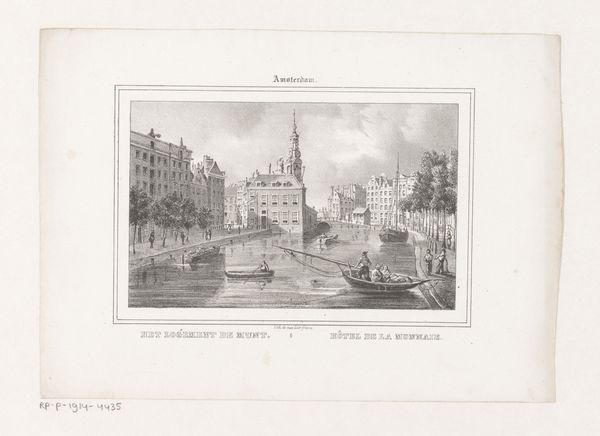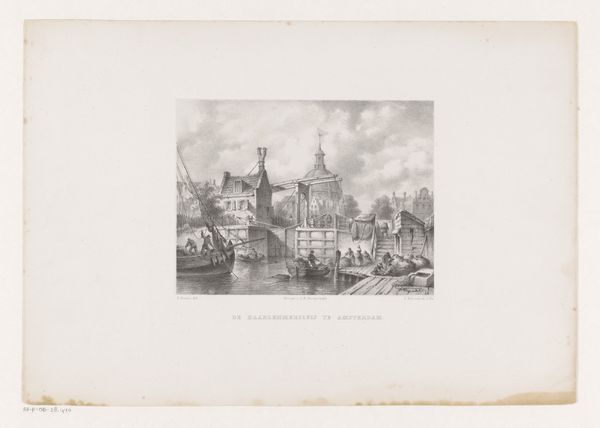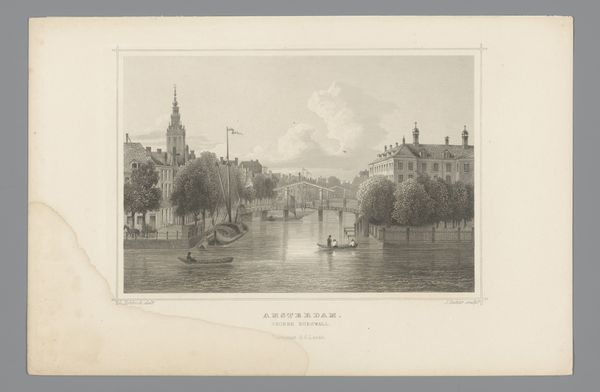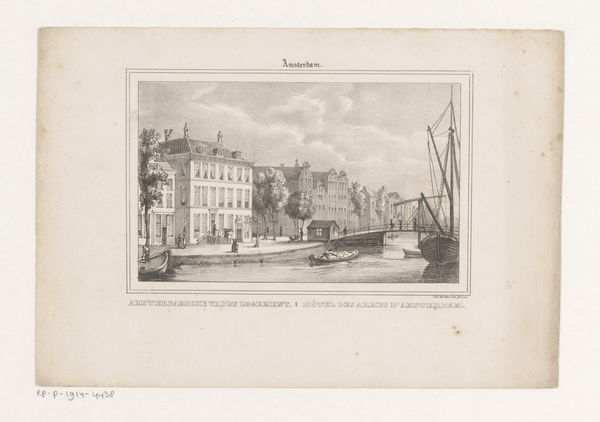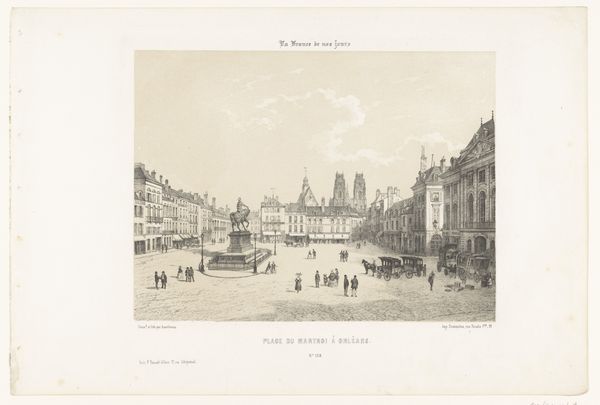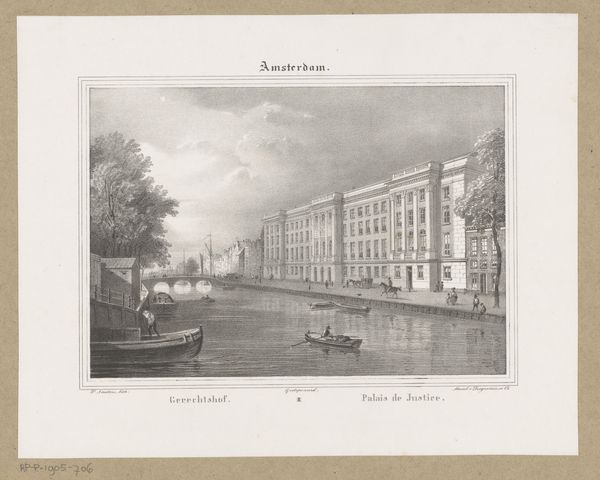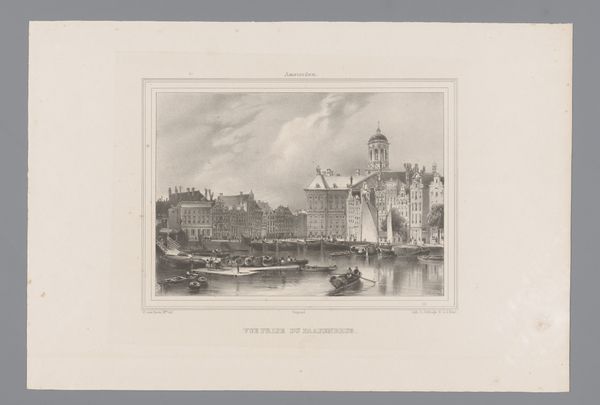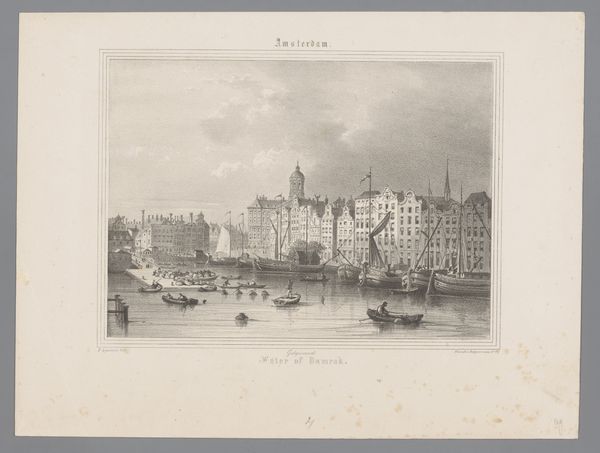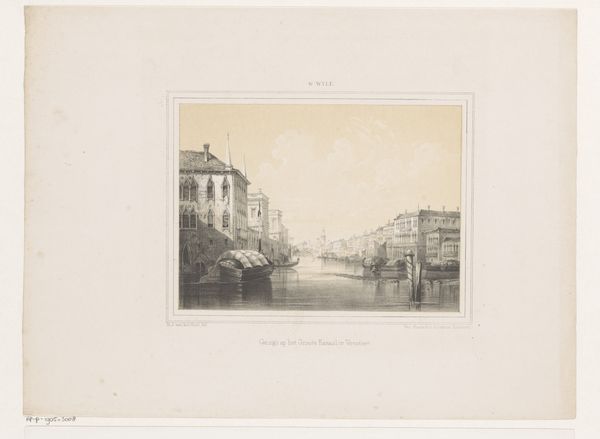
print, engraving
#
dutch-golden-age
# print
#
landscape
#
romanticism
#
cityscape
#
engraving
Dimensions: height 271 mm, width 360 mm
Copyright: Rijks Museum: Open Domain
Curator: Here we have "Gezicht op de Munttoren en logement De Munt," a cityscape rendering of Amsterdam by Théodore Fourmois, dating from somewhere between 1830 and 1840. It's a print, an engraving to be exact. Editor: It's got a quiet dignity to it, hasn’t it? A little melancholic, even. It feels like peeking into someone else's memory, filtered through a soft lens of time. The detail, especially in the buildings, is wonderful. Curator: The print captures a moment steeped in the visual language of Romanticism. The Dutch Golden Age legacy echoes in the detailed architectural portrayal. Notice how the Munttoren acts as this imposing symbolic vertical axis in the landscape. Editor: I like how the light reflects off the water. The engraver's clearly paying homage to the Dutch masters, those light magicians. It makes the whole city feel alive and gives everything an ethereal glow. I can almost smell the canals! Curator: Indeed. The water becomes a mirror reflecting not just the architecture but also the bustling human activity. Boats populate the canals, illustrating the waterways function for transportation and trade, essential elements of Amsterdam's identity. Even the overcast sky amplifies the feeling. It all speaks of trade and bustling public life in contrast to the static architecture that embodies centuries of history. Editor: So, it is a visual snapshot of a changing city, of daily lives flowing against the backdrop of enduring architecture. I find that particularly poignant, how life keeps moving no matter what stones and monuments we erect around it. What is particularly interesting to me is how in this city, you still find the presence of the Medieval in a city changing due to industrialisation. Curator: It's precisely this contrast—the enduring and the ephemeral—that Fourmois captures so well, I think. It serves as a mirror to our understanding of culture's long cycles of evolution and persistence of memory. It is a place both intimately familiar and perpetually distant from the modern observer. Editor: Absolutely. You are giving me too much to think about!
Comments
No comments
Be the first to comment and join the conversation on the ultimate creative platform.
